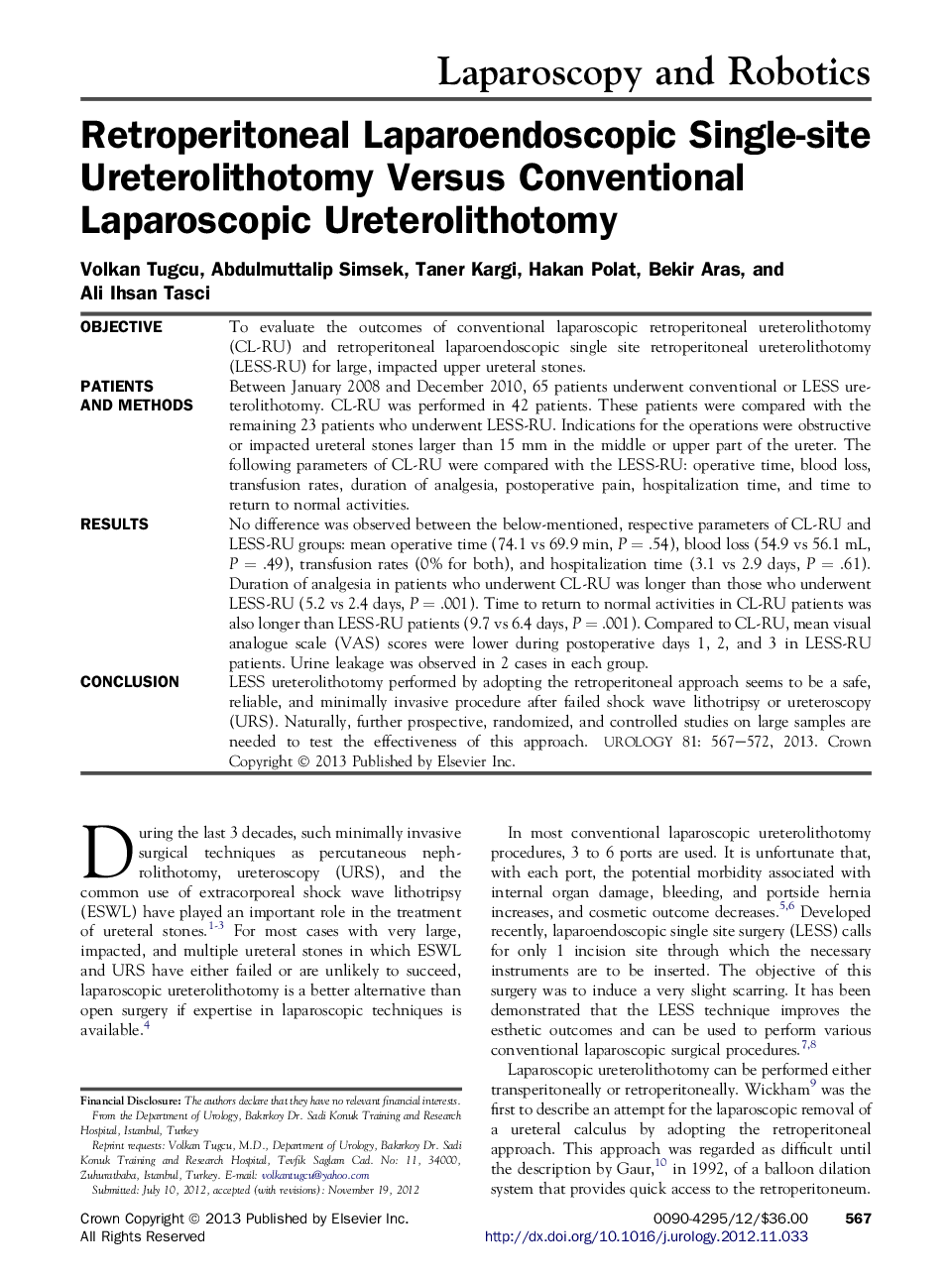| کد مقاله | کد نشریه | سال انتشار | مقاله انگلیسی | نسخه تمام متن |
|---|---|---|---|---|
| 6167558 | 1250326 | 2013 | 6 صفحه PDF | دانلود رایگان |

ObjectiveTo evaluate the outcomes of conventional laparoscopic retroperitoneal ureterolithotomy (CL-RU) and retroperitoneal laparoendoscopic single site retroperitoneal ureterolithotomy (LESS-RU) for large, impacted upper ureteral stones.Patients and MethodsBetween January 2008 and December 2010, 65 patients underwent conventional or LESS ureterolithotomy. CL-RU was performed in 42 patients. These patients were compared with the remaining 23 patients who underwent LESS-RU. Indications for the operations were obstructive or impacted ureteral stones larger than 15Â mm in the middle or upper part of the ureter. The following parameters of CL-RU were compared with the LESS-RU: operative time, blood loss, transfusion rates, duration of analgesia, postoperative pain, hospitalization time, and time to return to normal activities.ResultsNo difference was observed between the below-mentioned, respective parameters of CL-RU and LESS-RU groups: mean operative time (74.1 vs 69.9 min, PÂ = .54), blood loss (54.9 vs 56.1 mL, PÂ = .49), transfusion rates (0% for both), and hospitalization time (3.1 vs 2.9 days, PÂ = .61). Duration of analgesia in patients who underwent CL-RU was longer than those who underwent LESS-RU (5.2 vs 2.4 days, PÂ = .001). Time to return to normal activities in CL-RU patients was also longer than LESS-RU patients (9.7 vs 6.4 days, PÂ = .001). Compared to CL-RU, mean visual analogue scale (VAS) scores were lower during postoperative days 1, 2, and 3 in LESS-RU patients. Urine leakage was observed in 2 cases in each group.ConclusionLESS ureterolithotomy performed by adopting the retroperitoneal approach seems to be a safe, reliable, and minimally invasive procedure after failed shock wave lithotripsy or ureteroscopy (URS). Naturally, further prospective, randomized, and controlled studies on large samples are needed to test the effectiveness of this approach.
Journal: Urology - Volume 81, Issue 3, March 2013, Pages 567-572